
This year we have been working on Project Utopia. In this project, we created our version of a utopia. This is a perfect society, however, the Greek origin of this word actually means ‘no place’, as it is almost impossible to make a perfect society. In this project, we used the information we have learnt about in many subject areas to make a perfect society. This included livability, sustainability, and the United Nations Global Goals.
We started the Utopia project this year when we read ‘The Giver’ by Lois Lowry in English. This was what introduced the idea of a ‘utopia’. It was the story of a society which seemed to be almost utopian, but throughout the book, we found out things that showed that this was not true, since it is almost impossible to make a perfect society.
Then, in Science, we learnt about sustainability when we made a model of a sustainable house. This was important for the Utopia project because for a society to be perfect, it must be sustainable.
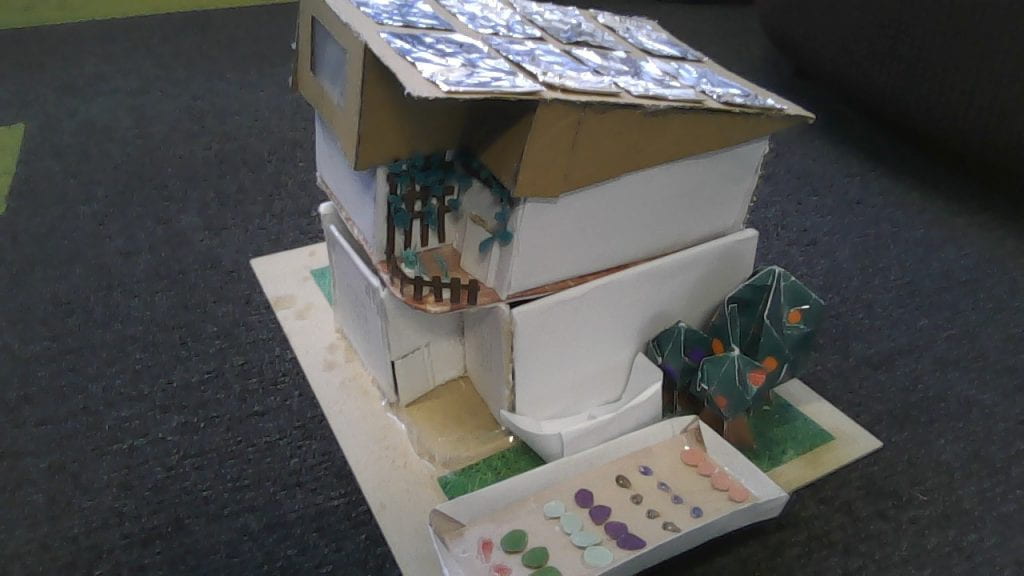
Science – sustainable house
Next, in HASS, we learnt about liveability factors. There are objective factors, which are climate, environmental quality, infrastructure, safety and stability and access to quality healthcare and education. In our utopia, we combined sustainability and the factor of environmental quality. One of our best features for these was the bio bus, which is a bus which runs on fuel made of human waste and other organic matter. Another liveability factor we focused on in our utopia was safety and stability. Since our utopia was near a tectonic plate boundary, we incorporated tsunami and earthquake safe building designs. Some of these were used in the Japan Postal Centre and during an earthquake, it was not damaged. There are also subjective factors, which are harder to measure. These are what people individually might want. For our utopia, we needed to make sure that we included these.
Then we started to individually plan our idea of a utopia. We needed to use what we had learnt about sustainability and liveability to create it. In the creation of our individual utopias, we created a map of a utopia, we filled out a table of information about it, such as the facilities, and we wrote three paragraphs about different liveability factors in our utopia.
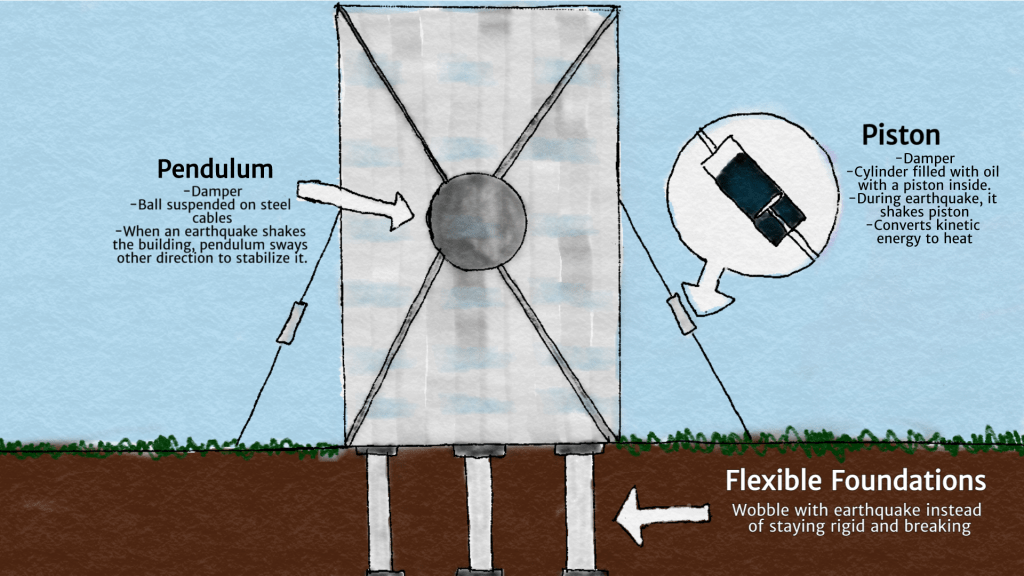
Visual aid for tsunami and earthquake safe buildings
Next, we were put into groups for the creation of our version of a utopia. During InnovatED, we learnt about the United Nations Global Goals for sustainable development. These goals tie in with sustainability from science, and liveability from HASS, as these factors are incorporated into the Global Goals. While creating our utopia, we incorporated the global goals, and were accredited for achieving some in our utopia. My group was accredited for 6 goals – no poverty, good health and wellbeing, climate action, life on land, life below water and gender equality.
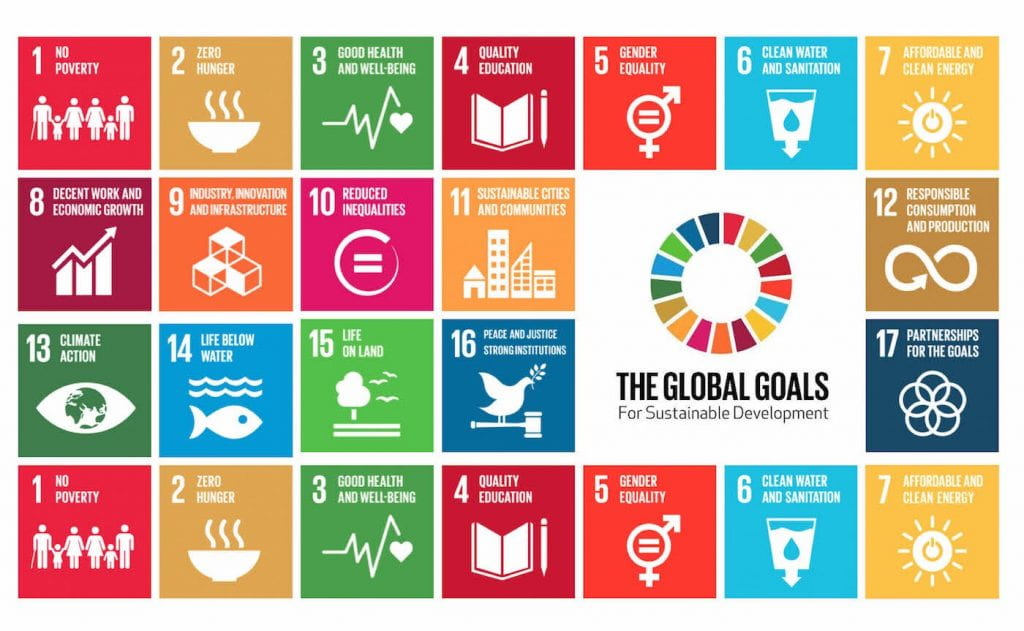
The United Nations Global Goals
Then, in our groups, we began the creation of the physical or virtual representation of the utopia. My group created it on CoSpaces. This is an online program which we learnt to use during Digital ICT. Using this program, you can put 3D models onto a ‘scene’, and code them to do things such as moving and telling you information. However, instead of building the entire map, we built key features of it, such as the tsunami and earthquake-safe building design and the sustainable energy farms. However, on the one of the last InnovatED classes, some of the models on the CoSpace turned into red cubes with crosses on them due to an error in the software. We had to use the ASC capability of problem solving to fix this – we replaced these with other models, but we left the original models underneath so the code for showing information would still function. CoSpaces was my favourite part of the project as I really enjoy coding.
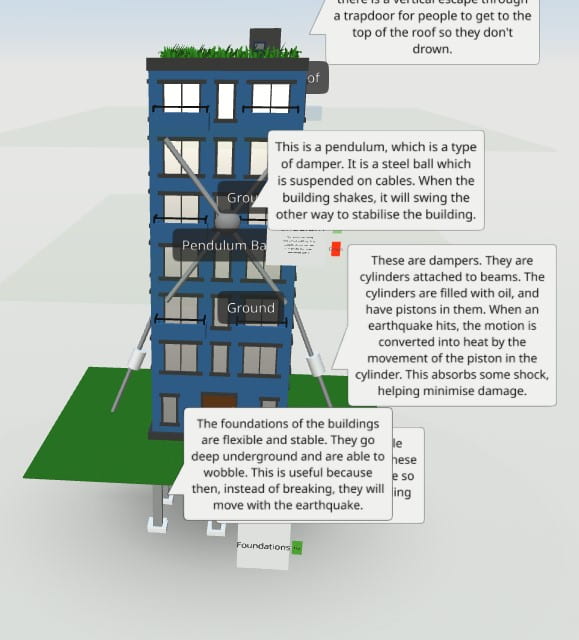
Virtual model of the tsunami and earthquake safe building design. 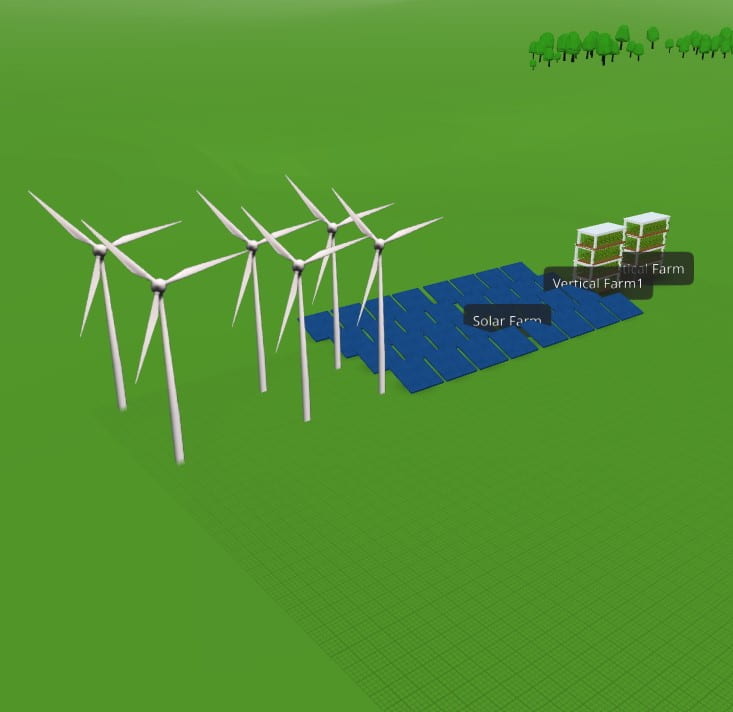
Virtual model of energy and food farms
While finishing building our utopia, we started a new part of the project in English, where we would prepare a speech about our utopia. We would say this speech in front of the class as a preparation for the presentation, where we would inform guests about what we have created. The speech had to consist of three topics: liveability, sustainability and the global goals. In our group of three, we split these up and each spoke about one of these topics. I spoke about sustainability. For the speech, we had to use skills for public speaking which we had learnt while doing debating in Connected Learning.
Then, in HASS, when we learnt about the constitution and the types of government in civics and citizenship, choose a government for our and created a constitution for our utopia. Our utopia is a constitutional monarchy, like Australia. The constitution is very important for our utopia, as it sets the rules for people to follow, and since nobody is above the constitution, it will help keep people safe, even if the queen, king or government tries to do something bad or dangerous for the utopia.
Then we presented our utopias. For this presentation, we set up a table for the utopia which guests would come around and look at. On our table, we had the flyover of the utopia, which we recorded using Loom and edited using Premiere Pro, which we learnt about in Media; we had the constitution; we had flyers about our utopia, we had the map of our utopia and we had posters about some of the features of our utopia. The guests were intrigued by the earthquake and tsunami safe building designs and the bio bus.
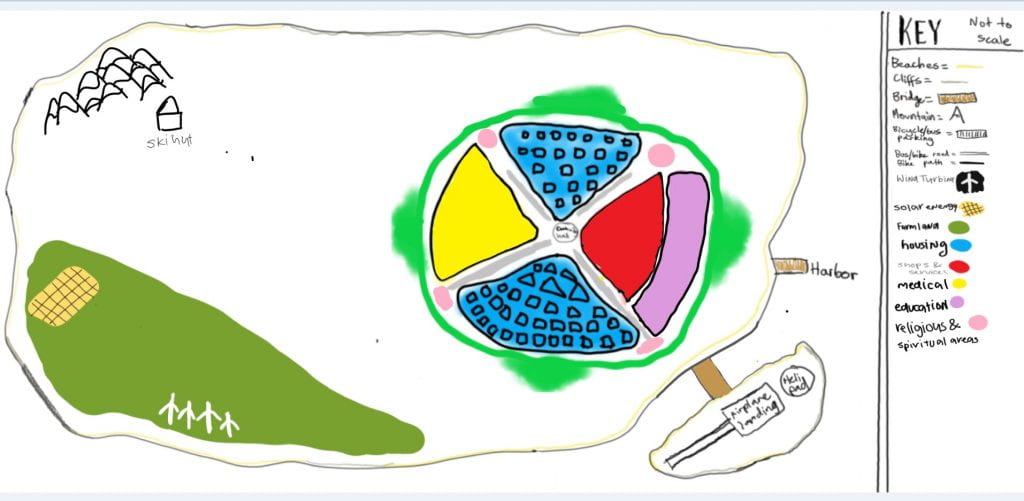
The map of our utopia.
I think that some of the most important information we learnt about during the process was sustainability, as there were many things we learnt that we can easily apply to real life to look after the environment, such as sustainable behaviours like turning the electricity off at power points. Civics and citizenship was also very important in the process, as we learnt about the constitution and the government by actually making them for our utopia.
I found collaborating with the group challenging, as it is sometimes hard to listen to and include ideas from everyone and still have my ideas heard, but in the end, I think the group work went well as we succeeded in this.
One of the things that I thought went really well was our CoSpace, which was able to represent some of the important aspects of our utopia in detail as information in words and as a 3D model of what the aspects would look like. Something else that I think went well was the speech, since we were able to present the important information we had researched about in the small amount of time. However, if we had worked on the constitution for longer, we could have improved it by making it more detailed or specific, such as adding examples and/or reasons for all the rules they would help make clearer, such as some of the responsibilities.
In conclusion, I think that Project Utopia was an interesting and unique way to learn about sustainability, liveability, the U.N. Global Goals, public speaking, and the constitution. I am pleased with the end result of our utopia, and I think it would be a nice place to live.
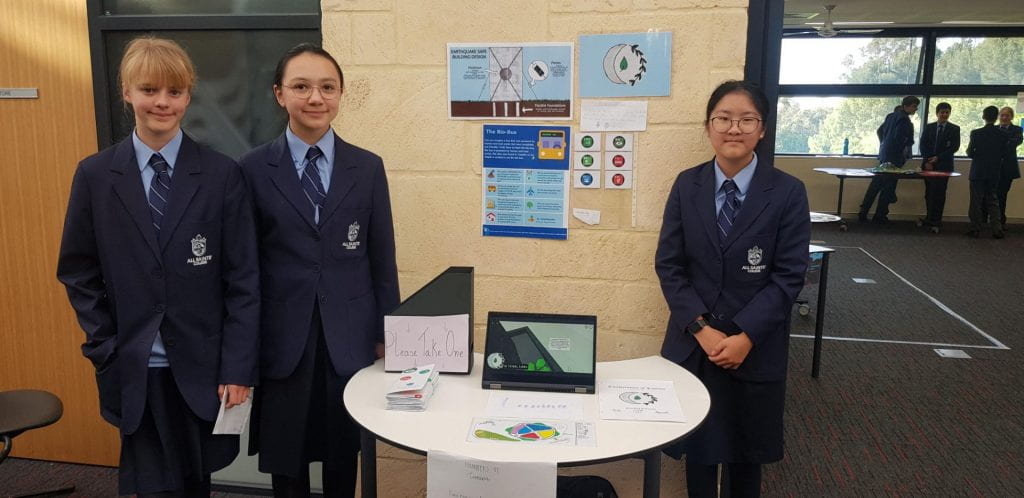
Picture from Utopia Showcase